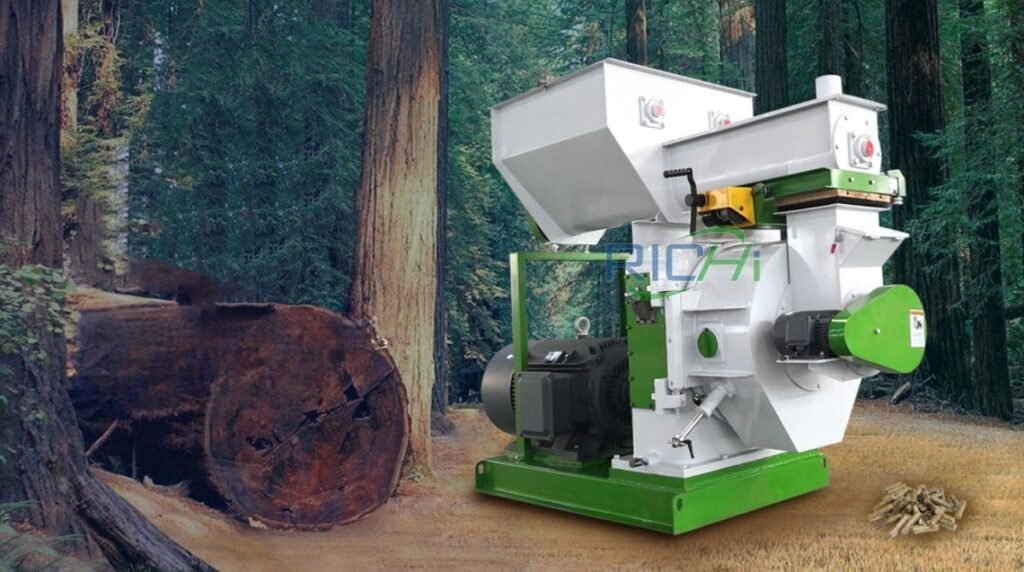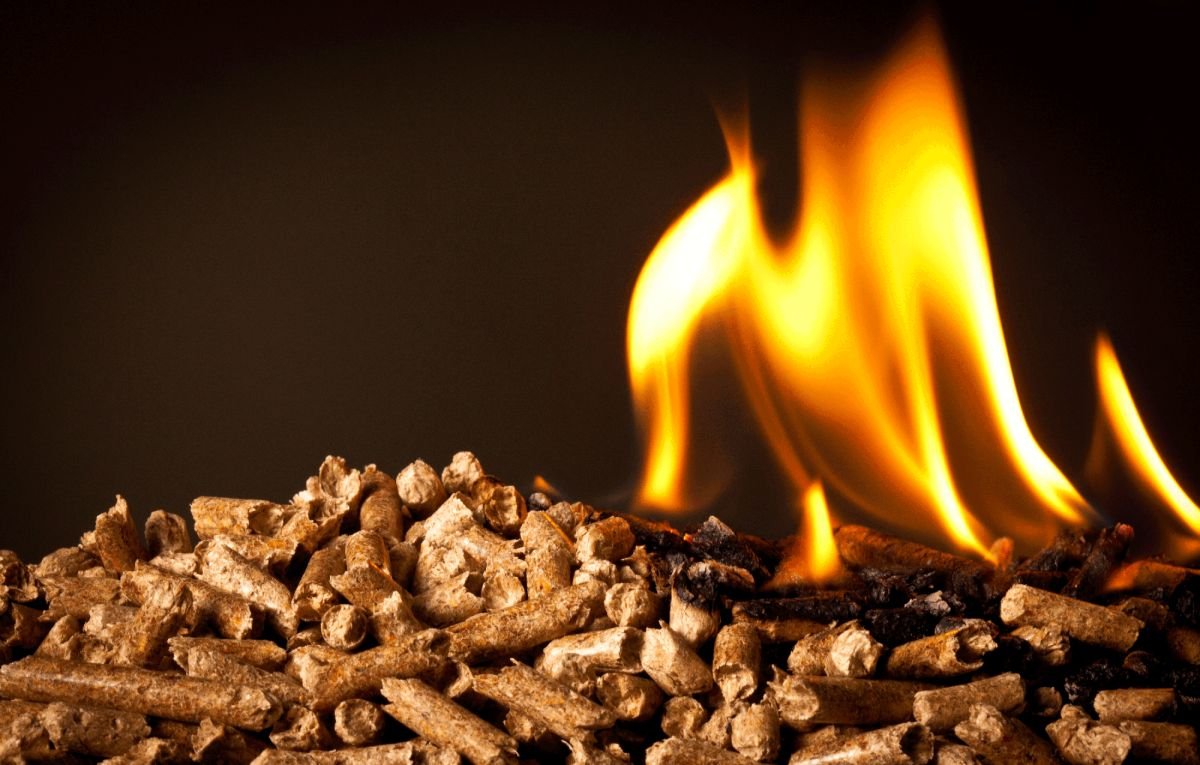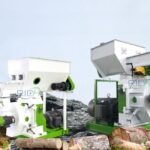When setting up a wood pellet production plant, selecting the appropriate machine components is crucial for ensuring efficient operation, consistent pellet quality, and optimal performance. The choice of components depends largely on the type of raw materials being processed. This article provides guidance on choosing the right wood pellet making machine components for different materials.
Flat Die vs. Ring Die Pellet Mills
The first decision to make is whether to use a flat die or ring die pellet mill. This choice depends on factors such as production scale, raw material type, and budget.
- Flat Die Pellet Mills: These machines are suitable for small to medium-scale production and can handle a variety of raw materials, including wood, agricultural residues, and grasses. Flat die mills are generally more affordable and have a simpler design, making them easier to maintain. However, they typically have lower production capacities compared to ring die mills.
- Ring Die Pellet Mills: Ring die pellet mills are designed for large-scale production and are better suited for processing wood-based materials. They offer higher throughput and can produce more consistent pellets. Ring die mills have a more complex design and are typically more expensive than flat die models.
Selecting the Appropriate Die Material
The die is one of the most critical components in a pellet mill, as it directly impacts pellet quality and durability. The choice of die material depends on the abrasiveness and density of the raw material being processed.
- Wood-based Materials: For processing wood chips, sawdust, and other wood-derived materials, stainless steel dies are recommended. Stainless steel offers excellent wear resistance, corrosion resistance, and durability. Materials such as 4Cr13 or X46Cr13 are commonly used for wood pellet dies.
- Agricultural Residues: Agricultural residues, such as straw, corn stover, and rice husks, are generally more abrasive than wood. For these materials, dies made from alloy steel, such as 40Cr or 35CrMo, are preferred. These steels undergo heat treatment to achieve a hardness of 50 HRC or higher, providing excellent wear resistance and mechanical properties.
- Grasses and Herbaceous Materials: Grasses and other herbaceous materials can be challenging to process due to their high silica content and fibrous nature. For these materials, dies made from tungsten carbide or ceramic composites are recommended. These materials offer superior wear resistance and can withstand the abrasive nature of grasses. (Related post: wood pellet making machine for sale)

Roller Design and Material
Rollers are another critical component that affects pellet quality and machine performance. The design and material of the rollers should be matched to the raw material being processed.
- Wood-based Materials: For wood pellet production, rollers made from alloy steel, such as 40Cr or 42CrMo, are commonly used. These steels undergo heat treatment to achieve a hardness of 45-50 HRC, providing a balance of wear resistance and toughness. The rollers should have a tapered design to ensure even wear and prevent slippage.
- Agricultural Residues: For processing agricultural residues, rollers with a harder surface are recommended. Rollers made from 60Mn or 60Si2Mn steel, with a hardness of 55-60 HRC, can withstand the abrasive nature of these materials. The roller surface may also be coated with tungsten carbide or ceramic for added wear resistance.
- Grasses and Herbaceous Materials: For grasses and herbaceous materials, rollers with a serrated or grooved surface can help grip the fibrous material and prevent slippage. Tungsten carbide or ceramic coatings are also beneficial for improving wear resistance.
Gearbox and Bearing Selection
The gearbox and bearings are responsible for transmitting power and reducing friction in the pellet mill. The selection of these components should consider the production capacity, raw material type, and operating conditions.
- High-capacity Production: For high-capacity pellet mills, planetary gearboxes or helical-bevel gearboxes are preferred due to their high efficiency and load-bearing capacity. Bearings should be selected based on the expected loads and speeds, with high-quality bearings from reputable manufacturers recommended.
- Abrasive Materials: When processing abrasive materials, such as agricultural residues or grasses, the gearbox and bearings should be protected from wear and contamination. Sealed bearings and gearboxes with enhanced sealing systems can help prevent the ingress of abrasive particles and extend component life.
- Harsh Environments: In some cases, pellet mills may operate in harsh environments, such as high temperatures or high humidity. In these situations, specialized gearboxes and bearings designed for these conditions should be used to ensure reliable operation and prevent premature failure. (Related post: wood pellet making machine price)
Maintenance and Wear Parts
Regular maintenance and replacement of wear parts are essential for ensuring the long-term performance and efficiency of wood pellet making machines. When selecting machine components, consider the ease of maintenance and availability of wear parts.
- Wear Parts: Identify the components that are most likely to wear out, such as dies, rollers, knives, and screens. Ensure that replacement parts are readily available from the machine manufacturer or authorized suppliers.
- Maintenance Requirements: Choose machine components that are easy to access and maintain. Look for features such as quick-release mechanisms for die and roller replacement, and easy-to-clean surfaces.
- Lubrication: Select components that require minimal lubrication and have extended lubrication intervals. This can help reduce maintenance costs and downtime.
Conclusion
Choosing the right wood pellet making machine components for different raw materials requires careful consideration of factors such as production scale, raw material characteristics, and operating conditions. By selecting the appropriate die material, roller design, gearbox, and bearings, you can optimize the performance and efficiency of your pellet production plant.Regular maintenance and replacement of wear parts are also crucial for maintaining consistent pellet quality and maximizing the lifespan of your equipment. By working with reputable machine manufacturers and following their recommendations, you can ensure that your wood pellet making machine is well-suited to handle the specific challenges posed by your raw materials.


